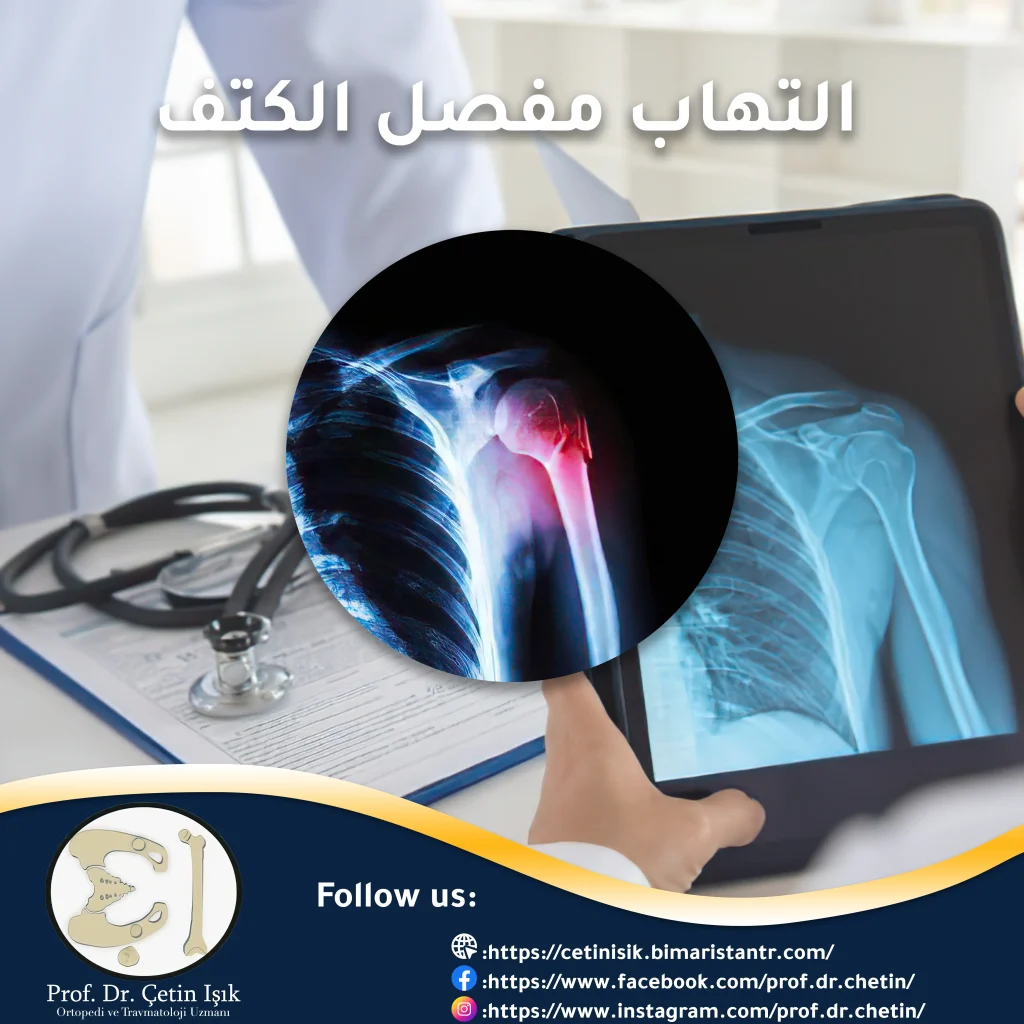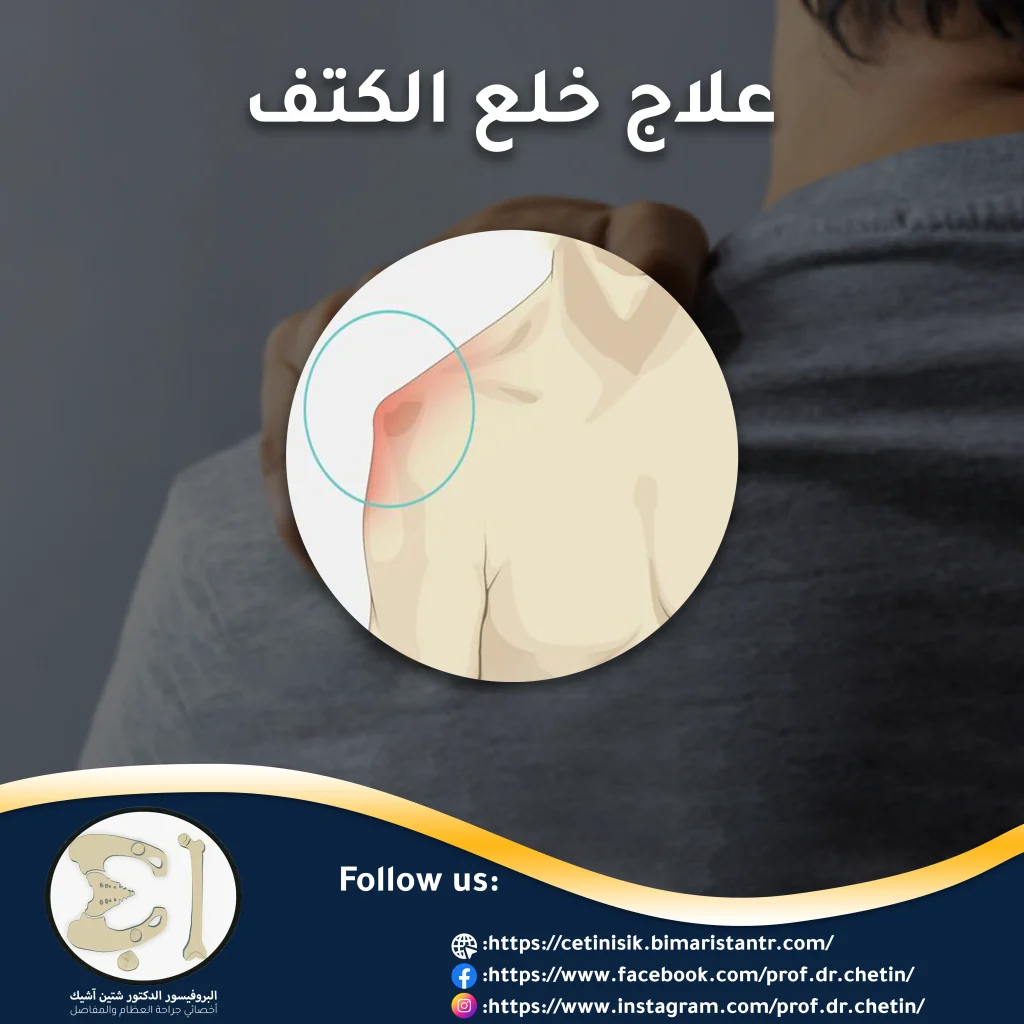Shoulder arthritis is irritation of the structures that form the shoulder joint, leading to pain and stiffness in the shoulder that may develop into cartilage damage, which hinders joint movement and affects the patient's activity.
Shoulder arthritis is common in elderly people over the age of 50 and after exposure to traumatic injuries such as fractures and dislocations. Learn with us about shoulder arthritis, its causes and treatment methods.
What is shoulder arthritis?
Shoulder Arthritis is the occurrence of irritation of the joint structures in the shoulder, which leads to damage to the joint cartilage, which may reach the stage of cartilage damage, and this causes loss of joint function.
The shoulder joint is considered a ball-socket type, as it consists of the head of the humerus (the ball) which rests in the glenoid cavity (the socket) in the so-called glenohumeral joint. This joint results in wide movement of the arm.
Shoulder arthritis is not limited to the glenohumeral joint, as inflammation may occur in the acromioclavicular joint (where the collar bone meets the acromion of the scapula).
Cartilage allows; covering the articular surfaces (humeral head-glenoid cavity); The surfaces slide inside the joint, which facilitates joint movement and also protects the bones from shocks. Therefore, in the final stages of inflammation, cartilage damage may occur, leading to the bones rubbing against each other and feeling severe pain.
Shoulder arthritis is the third most common arthritis after hip and knee arthritis because it is not a weight-bearing joint like the hip and knee joints.
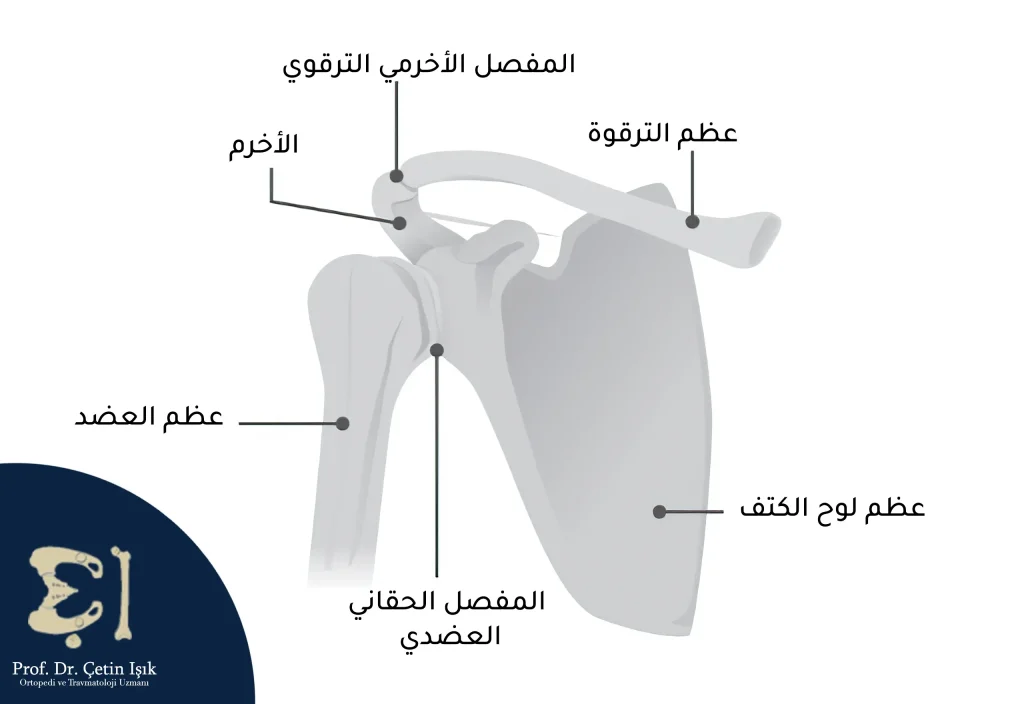
Causes of shoulder arthritis
There are many possible causes of shoulder arthritis, including:
- OsteoarthritisThe most common type of arthritis is age-related, as with age the cartilage becomes soft and cracked and then eroded, leading to bones appearing beneath the cartilage and rubbing against each other, causing pain.
- Rheumatoid Arthritis (Rheumatism): It is an autoimmune disease in which antibodies produced by the body attack the joints and their lining, leading to swelling of the lining and thus damage to the cartilage.
- Trauma: Trauma, such as shoulder fractures and shoulder dislocations, can lead to inflammation of the shoulder joint, known as post-traumatic shoulder arthritis.
- Rotator cuff tear arthropathy: The rotator cuff is 4 muscle tendons that surround the shoulder joint to support it and maintain its stability. A severe tear of the cuff can cause the humeral head to slip from its normal position and rub against other bones, thus damaging the cartilage.
- Avascular necrosis: This is the death of the head of the humerus (the ball) as a result of interruption of blood supply due to trauma or disease (diabetes), which leads to damage and damage to the cartilage.
Symptoms of shoulder arthritis
Symptoms of shoulder arthritis include:
- Pain: This is the most common symptom of shoulder arthritis. Shoulder pain initially gets worse during activities and improves with rest. As the inflammation progresses, it may also occur at rest and can awaken people from sleep. The pain can spread to the lower arm and elbow in cases of severe inflammation.
- Joint stiffness: This limits the range of motion of the joint, resulting in difficulty performing normal activities such as dressing, bathing, or driving.
- Cracking sensation: Damage and loss of cartilage leaves a rough surface that, when rubbed, causes a crack to be heard or felt.
- Lack of sleep: due to difficulty finding a comfortable sleeping position on either the affected or non-affected side.
Diagnosis of shoulder arthritis
Shoulder arthritis can be diagnosed through a physical examination of the patient and asking questions about the symptoms he is experiencing and his exposure to injuries.
Imaging methods can also be requested, including plain radiography (X-RAY), which shows the condition of the bones, narrowing of the joint space, and the appearance of bone spurs due to cartilage damage, and computed tomography (CT-Scan) and magnetic resonance imaging (MRI), which shows the soft tissues around the joint (such as tendons). ).
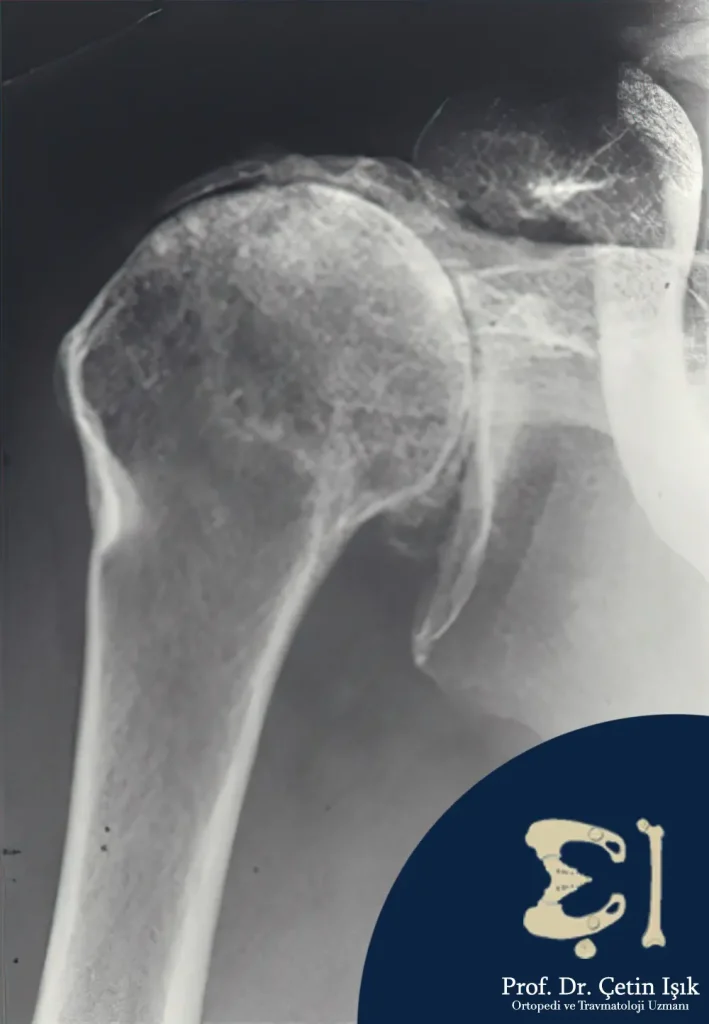
Treatment of shoulder arthritis
Treatment options for shoulder arthritis include home treatment with lifestyle modifications, medications, and even surgical treatment.
Home treatment
Treatment for shoulder arthritis begins with home care and lifestyle modifications that will maintain shoulder mobility and relieve pain. Home treatment includes:
- Shoulder exercises: Shoulder stretches (shoulder arthritis exercises) help improve the joint's range of motion and maintain stability
- Rest and lifestyle modification: Avoid activities that increase shoulder pain, such as lifting heavy objects and sports activities
- Using ice packs and hot compresses: helps reduce inflammation and improve blood circulation
Medical therapy
Drug treatment includes reducing inflammation and relieving pain through:
- Non-prescription pain relievers: such as nonsteroidal anti-inflammatory drugs (NSAIDs) such as ibuprofen and naproxen
- Corticosteroid injections: This is the most common medication option, as cortisone is injected into the shoulder joint to reduce inflammation within the joint and relieve pain.
Surgical treatment
Surgical treatment can be resorted to when other treatment options fail. Surgical treatment includes several surgical options, one of which is chosen based on the type, location, and severity of the inflammation.
- Total shoulder joint replacement Total Shoulder Replacement: The humeral head is replaced with a new metal head, a metal stem is implanted in the humerus, and a plastic socket is placed in place of the glenoid socket.
- Reverse Total Shoulder Replacement: This operation is performed in some cases, such as a rotator cuff tear, where the shoulder joint is reversed by placing a metal head in place of the glenoid cavity and placing a cavity connected to the humerus.
- Debridement Arthroscopic shoulder joint Arthroscopic Shoulder Debridement: Small instruments are inserted through incisions into the shoulder joint to remove soft pieces of cartilage.
- Resection Arthroplasty: It is the most common surgery for injuries to the clavicular-acromial joint, in which a small amount of bone is removed at the end of the clavicle, and the resection area is filled with scar tissue.
- Shoulder Ligaments Reconstruction: Shoulder ligaments damaged by inflammation are repaired through modern arthroscopic techniques.
After surgery, the arm is placed in a sling for approximately 4-6 weeks, with the need to perform range-of-motion exercises prescribed by the doctor to regain the ability to move without harming the shoulder.
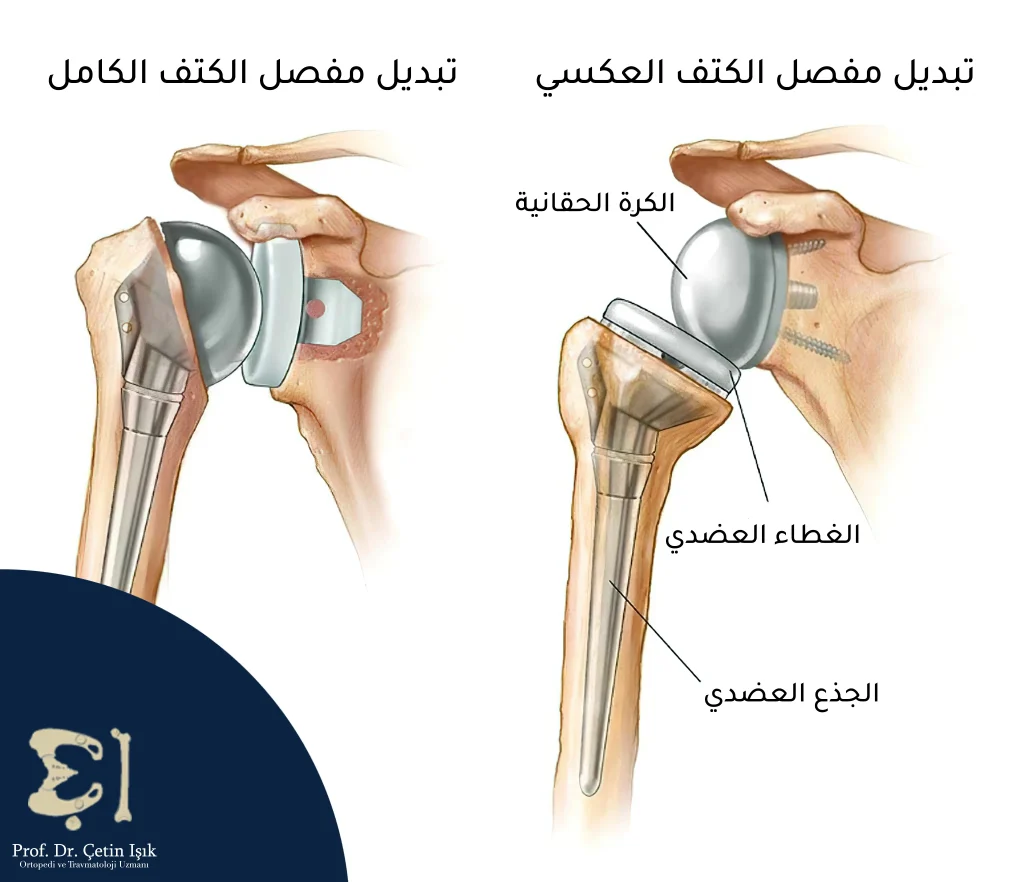
Preventing shoulder arthritis
Shoulder arthritis can be prevented by:
- Do light exercise that does not involve lifting weights
- Avoid activities and sports that increase the risk of shoulder injuries
- Control blood sugar to avoid avascular necrosis
In conclusion, shoulder arthritis must be taken seriously because when the disease is neglected, it may cause damage to joint cartilage and thus loss of joint function.
Sources:
Common questions
Symptoms of shoulder arthritis include pain, stiffness, a popping sensation, and poor sleep.
Treatment options for shoulder arthritis include home treatment, lifestyle modifications, medications, and we may resort to surgical treatment.
The persistence of shoulder arthritis varies depending on the severity of the inflammation and the treatment procedure performed. In mild cases, it takes 2-4 weeks, while severe cases may take several months.


